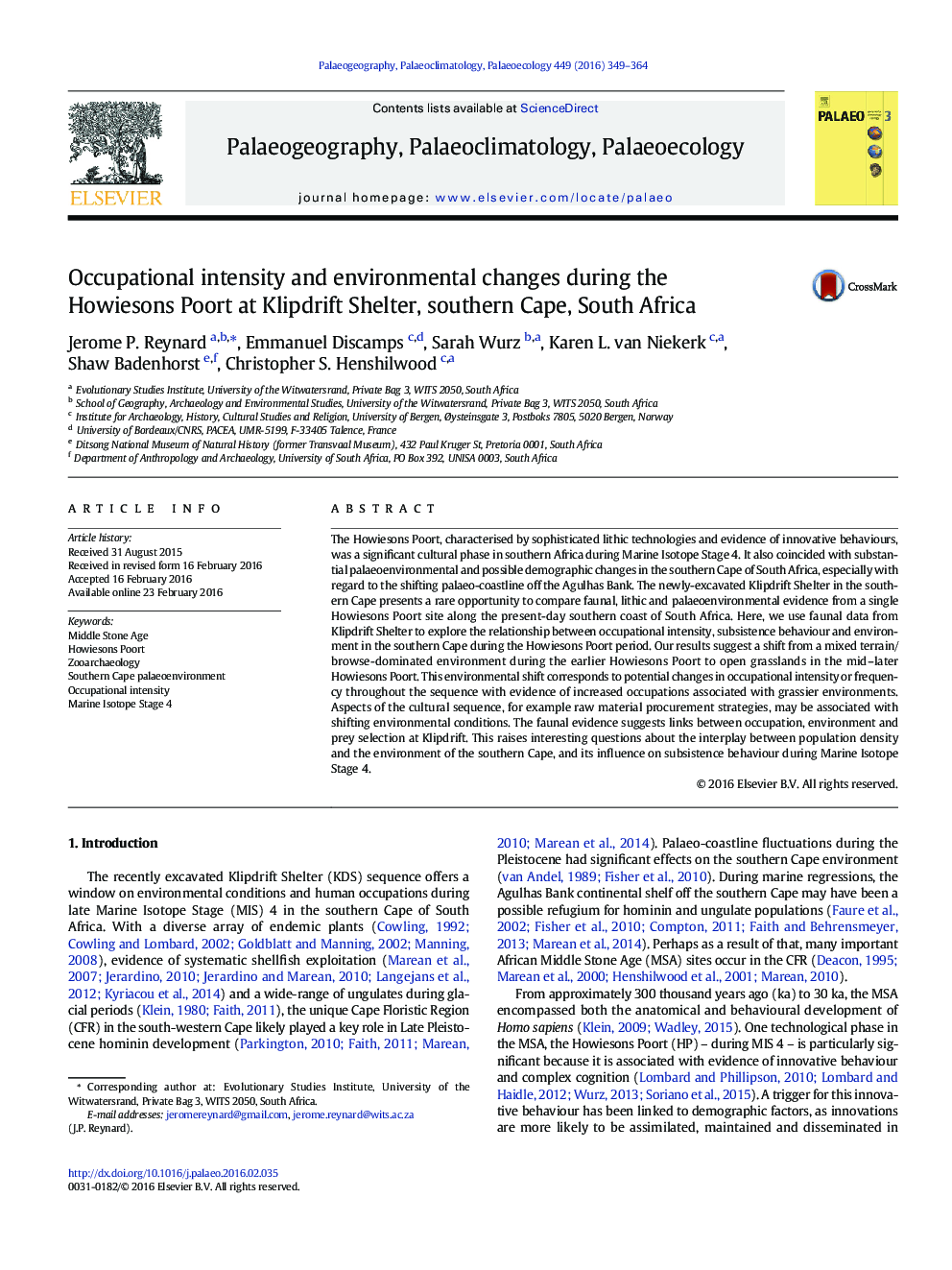| Article ID | Journal | Published Year | Pages | File Type |
|---|---|---|---|---|
| 4465772 | Palaeogeography, Palaeoclimatology, Palaeoecology | 2016 | 16 Pages |
Abstract
The Howiesons Poort, characterised by sophisticated lithic technologies and evidence of innovative behaviours, was a significant cultural phase in southern Africa during Marine Isotope Stage 4. It also coincided with substantial palaeoenvironmental and possible demographic changes in the southern Cape of South Africa, especially with regard to the shifting palaeo-coastline off the Agulhas Bank. The newly-excavated Klipdrift Shelter in the southern Cape presents a rare opportunity to compare faunal, lithic and palaeoenvironmental evidence from a single Howiesons Poort site along the present-day southern coast of South Africa. Here, we use faunal data from Klipdrift Shelter to explore the relationship between occupational intensity, subsistence behaviour and environment in the southern Cape during the Howiesons Poort period. Our results suggest a shift from a mixed terrain/browse-dominated environment during the earlier Howiesons Poort to open grasslands in the mid-later Howiesons Poort. This environmental shift corresponds to potential changes in occupational intensity or frequency throughout the sequence with evidence of increased occupations associated with grassier environments. Aspects of the cultural sequence, for example raw material procurement strategies, may be associated with shifting environmental conditions. The faunal evidence suggests links between occupation, environment and prey selection at Klipdrift. This raises interesting questions about the interplay between population density and the environment of the southern Cape, and its influence on subsistence behaviour during Marine Isotope Stage 4.
Related Topics
Physical Sciences and Engineering
Earth and Planetary Sciences
Earth-Surface Processes
Authors
Jerome P. Reynard, Emmanuel Discamps, Sarah Wurz, Karen L. van Niekerk, Shaw Badenhorst, Christopher S. Henshilwood,
